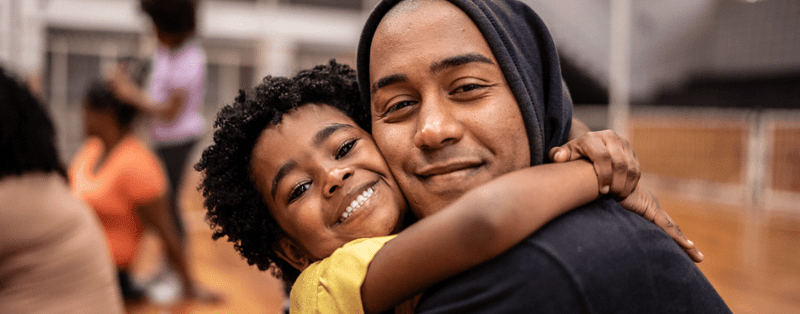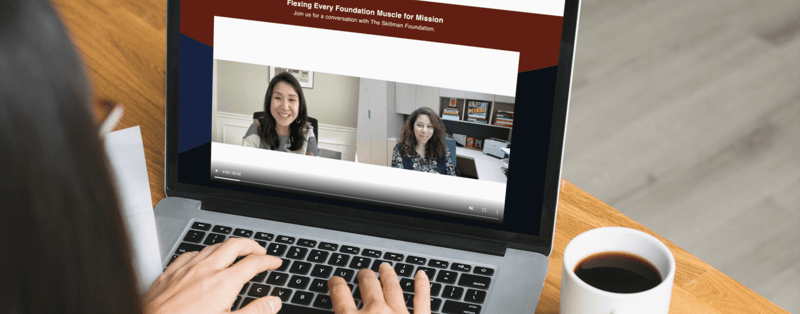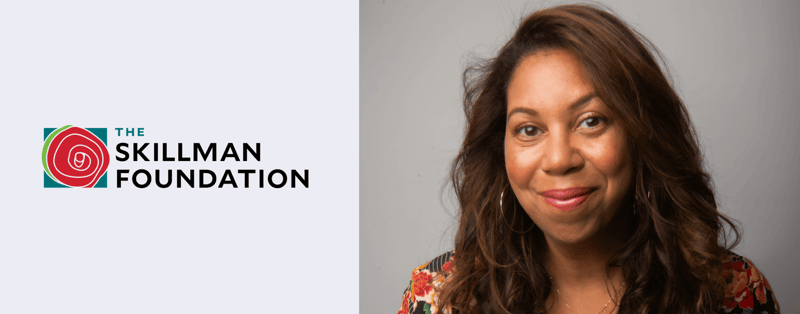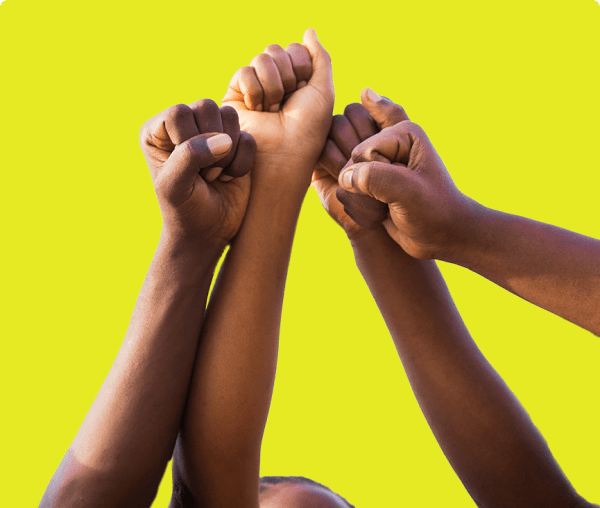Addressing racial equity in Detroit
 Gohar Chichian
·
10 minute read
Gohar Chichian
·
10 minute read

Racial equity is an important yet often overlooked issue in our society today. We have seen a rise in civil unrest and social justice movements, bringing racial inequity to the forefront of conversations. Although progress has been made, there is still much work to be done to ensure everyone has equitable access to resources and opportunities.
This strikes true in the world of philanthropy as well. Nonprofits and grantmakers alike struggle with how to best serve and represent the time-sensitive needs of their communities. Grantmakers find themselves examining their organizational infrastructure and practices to ask:
- What are the institutional pain points and disadvantages that they must examine and address? How can grantmakers take that institutional structure and realign it to the true mission and vision? What can they do to leverage their work more powerfully in the community?
- How can philanthropic institutions develop a continual practice of listening, strategizing, learning, and decision-making with their communities?
- How can grantmakers develop racially equitable outcomes focused on improving outcomes for their respective regions?
- What does changing policies and operationalizing racial equity truly mean and look like on a daily basis?
We hosted a conversation with our Chief Operating Officer, Kathy Brady, and Angelique Power, President and CEO of The Skillman Foundation, to learn more about how they addressed these questions with a racial equity audit. The Skillman Foundation is a Detroit-based private independent foundation that invests in Detroit youth, with a focus on youth power and justice. With $550M in assets and $22M in grantmaking each year, the foundation has a tremendous impact in the Detroit community. But money isn’t enough – and in order to drive true liberation, The Skillman Foundation under Angelique’s leadership has embarked on a community-rooted strategic planning process to rethink its grantmaking, metrics, and partners. With feedback from the community, she architected a racial equity audit internally of all grants, operations, and the endowment, allowing for transparency and accountability to community as well as mission-alignment in all policies and practices.
Prior to the Skillman Foundation, Angelique was the President of Field Foundation and was a program director at the Joyce Foundation. Earlier in her career, she led communications and community engagement at the Museum of Contemporary Art Chicago and community relations nationally for Target.
Since 2020, The Skillman Foundation and Catchafire have partnered together to bring capacity building to Detroit nonprofits.

You can watch the event here. As you review our conversation with Angelique, consider:
- How are you going beyond the grant to create equity?
- Have you asked yourself what else is possible?
- Have you explored with your board of directors what more your foundation could be doing to move the needle?
The Skillman Foundation: What a racial equity audit uncovered

In our conversation with Angelique, we dug into the trenches of how she has approached racial equity, what she has learned, and how more foundations can tackle the layers of how they do business in service of their mission.
When you took over the leadership of The Skillman Foundation, did you already have the idea of the racial equity audit in mind or did it come from the listening tour?
We’re building on our past works, walking in the paths of giants who used to work here. In our video about diversity, equity, and inclusion, we talked about equity, not about race. In order to honor the work of those who have come before us, we need to continue to move the work forward. There’s such an opportunity in this moment to not only talk about racial equity but also understand it - and not use this word as a replacement for diversity. To actualize it, to show receipts.
I came into The Skillman Foundation in 2021, wanting to unpack some of these terms that have been overused. In this great city of Detroit, a sparkling Black and brown city, we have work to do and we have to understand how we’re using that term. We had to hand our DEI statement to the community to say this is a tool you can use to hold us accountable to see if we are doing what we say we are doing.
Who did you engage with at The Skillman Foundation?
The work around racial equity had started before me. We had a tremendous amount of internal collaborators. In 2021, the pandemic was still raging and we had just witnessed all of these uprisings that had happened around the world. We were paused enough by the pandemic that we could pay attention. The uprisings were being led by Gen Z.
Gen Z is the largest generation - they make up one third of the world's population and a quarter of the population in the United States. Gen Z is the most diverse population, with one in five identifying as LGBTQIA+, one in three knowing someone whose gender is nonbinary, and 48% identifying as Black, Indigenous, or people of color (BIPOC). They led multiracial, multicultural uprisings, and have an intersectional understanding of issues and solutions.
Detroit is a young city, with an average age of 34. Black and brown residents belonging to Gen Z are all over this beautiful city waiting to lead us to a new place. The more you listen to Detroiters, the better you will be at this job.
"Our goal is not to just have young people help change The Skillman Foundation and the way that we work, but they should be at tables determining what systems change looks like, what it means, and what their future is."
What has the board’s role been? How did you set up something to catalyze change?
The journey with the board has been an intensive one. Often in these spaces, staff are far ahead of the board and have a deep understanding of this work. There's code switching in the boardroom or staff can feel uncomfortable in personally traumatic conversations with the board. They have to withstand the questioning and demoralization of the work they do, and of the grantees and the work they do. At the end of the day, I'm not going to be at The Skillman Foundation forever, the work can’t be Angelique’s work - it has to be our work, in the soil of what we do.
We're moving in unison with our board and staff and the Detroit community so that we’re collectively trying to get through this moment. Our approach is focused on community-rooted strategic planning that informs the board, with delicate conversations about what The Skillman Foundation has done and where the Foundation has misstepped in hindsight, which are difficult things to bring into a boardroom.
We also used a Ghanaian approach called sankofa, which refers to going back and fetching that which you have forgotten. In other words, studying your past so you can understand your future.
We analyzed Detroit over the last 40 years, to review what The Skillman Foundation did. It was always well-intentioned, thoughtful, and smart - but what did we learn from it?
Our 40 year history walk, our youth council, and embracing community-rooted strategic planning helps us move forward this work.
“The longer you stand in Detroit, the smarter you become. The more you listen to Detroiters, the better you will be at your job. And so coming into the city and spending a lot of time with people, with residents, with teachers, and especially with young people, that’s how I got my education on what we need to do at The Skillman Foundation.”
You had to come up with ways to bring everyone through the journey, and work through the facts, and the emotion that everyone carries in this work - this is not unique to the racial equity audit or foundations, but this is what happens when you’re dealing with equity. How did you create the space? Is it the energy you brought, is it these community leaders and voices?
Yes to all of it. The staff was stepping forward. The board knows that whenever you change leadership, there’s a new culture change. We were looking at how the pandemic highlighted the disparities and decimated a lot of our understanding of what we were able to achieve in philanthropy.
There was a moment where each of us realized that if we are awake and paying attention, we are very aware of the fragility of life and there’s a reason we’re here and have survived so much, and have so much ahead of us. The old ways of doing things have not worked, we have to do things differently internally to get a different result.
Did this work sit with your audit committee, was the entire board involved? How did you delineate responsibilities?
We were looking at everything we spent in the last three years by race: where have our grants gone, our operating budget, and endowment. Then we brought that data forward into the boardroom. We involved our program staff, we were championed by our senior leadership, and it was all hands on deck to get the audit complete.
When we brought the audit results into the boardroom, I shared, ‘the only thing unique about this data is that we did the research.’ If you look at any foundation, you’ll see unintentionally or intentionally, that we are funding white-led organizations, investing in white-led investment funds, and a majority of money for vendors are going to white-led businesses. What we say we’re about and who our bosses are, are totally different, especially in a city like Detroit.
When the board saw the results, they said we have to immediately make this public. It’s a tool and it creates accountability.
We brought in external consultants Justice Informed to help us with an internal audit. Culturally as an foundation, how did we make the decisions that led to the external audit results? Both board and staff are reviewed Justice Informed's whitepaper and creating another racial equity committee to move forward. We are in the process of workshopping the committee's charter, terms, benefits, and power. We know this has to be organization-wide and we all have to own the responsibility of operationalizing racial equity.
Racial equity is our calling and mandate. We have to show up every day, look at every practice and policy, and figure out the racialized benefit or harm. We may try something new that may not be successful, but that is a part of the journey.
Even looking at the terminology in an endowment - the financial heart of a foundation - is often difficult to touch and investigate. When it says ‘we’re supporting women and minorities,’ what does that mean to your investment manager vs. your youth council, board, staff, and program staff?
It’s another truism. The reality is, if you look at why we don't have more BIPOC-owned investment firms in our endowments, it isn't because they don't exist or because they aren't doing well. It's because there’s a huge blockade and obstacle course not dissimilar to grantmaking. In those spaces, I can detect that there’s something going on, but there’s a lot of language around the economic systems. Even getting to unpack what a BIPOC fund is inside an investment community is a big task - it will say ‘women and minority-owned’ - it but often means white women, or refers to women around the world. You need to be specific about seeking Black and brown women in the United States.
Disaggregating data is the first step, and then having a partner as an investment consultant that's willing to go through their processes to see what they can do differently. We've added three new investment committee members who are experts in diversifying endowments to help on our journey.
Tell us about the results of the work. How has this reevaluated power? How has it changed internally and externally?
Internally, we are thinking about the work we’re doing in Detroit. We’ve created a new strategic framework based on the listening tour and analysis, and we're investing in people and in systems change. Youth, educators, and neighborhood residents are most proximate to the work, and need the investment. We also want to invest in systems change.
Detroit’s fate depends on Lansing, the state capital. We have to be strategic - we are trying to provide scaffolding to Black and brown kids in a school system that was never built for them in the first place. We have to help students try to beat those odds.
We believe in a groundbuilders framework: we should link arms with the groundbuilders to work to change the odds for children across Michigan, not just Detroit. Our work is changing how we think about how we distribute dollars, to whom, who designs solutions, and how we design policy in addition to being community embedded. We're changing our board culture by integrating youth voices, utilizing our youth council, and encouraging everyone to work collaboratively.
You’re reexamining what it means to support Detroit youth - it means a wider lens on how The Skillman Foundation is examining systems, not just with a Detroit focus, but a Michigan focus. How were you able to go about categorizing your investments by race without having self-reported data from grantees? Also, were you looking at the diversity of project teams, or of the grantee organizations writ large?
What we didn’t want to do is ask grantees to jump through an additional hoop for a racial equity exercise, so we do have some margin of error. Now we are asking our grantees to self identify as:
- BIPOC-led - the leader of the organization is a person of color.
- BIPOC organization - the majority of the board and senior staff and the place where the organization resides are people of color.
You’ll see many BIPOC-led organizations in Detroit, which is about 65% of our grants. BIPOC organizations are about 25% of grants. This allowed us to examine our processes - what are we doing that prevents us from getting to BIPOC organizations?
We had a budget threshold of $100,000. What’s the racialized impact of this threshold? Who gets to be an organization that can amass over $100,000 and has high net worth individuals on the board? We removed this arbitrary budget amount.
Our racial equity audit isn’t a one time thing; we'll be reporting every year to see where the next complexity is, where we need help, where we made progress, and why.
When you are speaking about the racial equity audit and the exercise, does this include the LGBTQIA+ community? Is racial equity all inclusive?
Detroit is a majority Black and brown city. We felt that it was really important first and foremost to be accountable to Detroit where our dollars were going by race. When we cut across these marginalized categories - rural, disabilities, LGBQTIA+ , women - when you look where people of color are faring, they struggle more. We wanted to center race.
We’re also in the midst of a tremendous backlash of even talking about this work in our schools and libraries. It's about intersectionality - people don't just show up as one thing, they show up as many things. It's part of what Gen Z is teaching us. How do we understand where we’re at with other pieces of this identity? We’re working on it. This is a legitimate challenge we need to think about.
We also have to think about: What does the future look like for young people’s involvement in philanthropy and systems change?
Ideally, it looks like young people on boards, not just on Foundation boards or nonprofit boards, but on corporate boards. Ideally, it looks like young people sitting in the state legislature talking about policies. Ideally, it looks like young people that are working their way not in an unpaid internship, but are actually paid to be part of solution design, because it is their future that they’re designing.
Leading visionary change - what is it really like?

The people tuning in and working on all of this are warriors. They have brilliant ideas that they are pushing forward and are demoralized sometimes. This work is hard and it's scary. There are times that I feel like I wake up and feel a sense of fear about this. Whether it's truth telling about the work or your sector, whether it's trying to build something against all odds, whether it's the fear of not doing this well, not helping those you need to help, not being able to move the needle, and letting down your staff and young people. It’s doing it anyway. It’s how I know I'm doing my job; if I was comfortable, or bored, or continuing things that are easy, then I should not be in philanthropy.
“There’s so many resources, and you're in one of the right places by being at Catchafire. We're living at a time where there’s a lot of thoughtful people working on this that may not be in your organization. As the world is opening up, find your people, find your bench. For the people of Detroit, I'm your bench. Working collaboratively is the way to do it.”
There is a multicultural group of people brutally enforcing racism every day, and we need a multicultural coalition of people working overtime against this. We’re here and we just need to be in this together. We need to be forgiving of each other in this work because it’s messy and complicated. We will never make the progress if we don't try. We're in a warrior community where we’re doing this work together.
What’s next for The Skillman Foundation?
Follow us on social media: Instagram @skillmanfoundation, TikTok @kidsmatterhere, and Twitter: @skillmanfound. Our youth council is doing incredible things; our annual report was designed by Gen Z. Follow us, lead us, communicate with us, and tell us what you're doing.
Get involved with Catchafire

If you’re a grantmaker and would like to learn more about equipping nonprofits in your community with responsive, high-quality capacity building support, let’s connect. Email us here.



